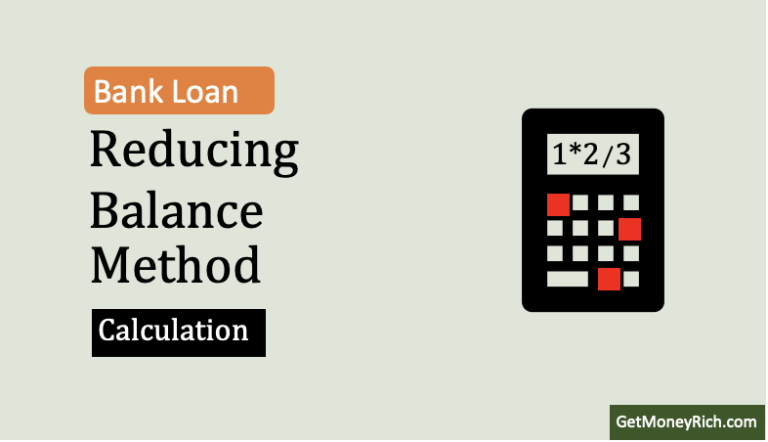Summary Points:
- Piramal Finance’s entry into the gold loan business, as reported by Business Standard on March 28, 2025, highlights a growing trend among Indian banks and NBFCs.
- India’s massive gold reserves (25,000–30,000 tonnes) and cultural affinity for gold drive demand for quick, collateral-based loans.
- The business model offers low risk (default rates below 1%) and high rewards (10-20% interest) due to secured loans against gold.
- Fast processing, minimal paperwork, and customer satisfaction make gold loans attractive to both lenders and borrowers.
- The market, worth over Rs.7 lakh crore with only 5.6% penetration, promises growth, especially with financial inclusion efforts targeting rural areas.
Introduction
This morning I saw this news article in Business Standard which said that “Piramal Finance is planning to foray into the gold loan business for growth.” I read it and thought, why is everyone jumping into this gold loan game? It’s not just Piramal; so many banks and NBFCs in India are either starting or expanding their gold loan portfolios. What’s the big deal about this business? What’s in the gold loan business that’s pulling in these big players? I though why not share the details of the business model with you all. It’s fascinating how something as old-school as gold is turning into a hot trend for modern finance companies.
To get it, we need to look at the business model, the Indian love for gold, and the numbers that make this a no-brainer for companies. Trust me, by the end of this, you’ll see why this isn’t just about lending money, it’s about tapping into something deeply Indian and incredibly smart.
Just for your information, there are two good listed companies doing gold loan business. They are Muthoot Finance and Manappuram Finance. As a stock, though my Stock Engine’s algorithm do not give these business high scores, but for sure they are thriving in India.
Demand For Gold Loan in India
Gold is like almost in demand in India. We’ve been stashing it away for generations, not just for show but as a fallback plan.
Reports I’ve come across say Indian households hold anywhere between 25,000 to 30,000 tonnes of gold. Most of it sits in lockers, under mattresses, or in those secret almirah compartments of ones homes.
Now, imagine a bank or NBFC looking at all this “idle” gold and thinking, “We can do something with this.” That’s where the gold loan business kicks in. For companies, this huge stockpile is the source of their idea to do a gold loan business.
People might not have cash in hand, but they’ve got some gold. And when they need money, say for a medical emergency, a kid’s education, or even to start a small business, they’re willing to pledge that gold for a loan.
It’s quick, it’s easy, and it’s something we Indians are comfortable with.
Banks and NBFCs see this as a massive opportunity because the demand is already there, no need to convince people to borrow against their gold. They’re already doing it.
The Business Model
Now, let’s talk about the business model.
Why do companies love it so much? Simple, it’s low risk and high reward.
When you take a gold loan, you give your jewellery or coins to the lender as collateral. If you can’t repay, they sell the gold and recover their money.
Unlike personal loans or business loans, where the lender has to chase you down or deal with bad debts, gold loans are secured. That gold sitting in their vault is their safety net. Even if gold prices drop a bit, they usually lend only 75-80% of the gold’s value (what’s called the loan-to-value ratio), so they’re still covered.
I was reading some stuff lately, and it turns out the default rates on gold loans are super low, less than 1% in most cases. But there was also another new report (December 2024) of Business Standard that talks about a “sharp rise in gold loan defaults.” The reported cited the reason of defaults to “slower economy and falling income levels.” So, this is also true that people do default on their gold loans, but they generally payback and take back their gold deposit.
Compare that to unsecured loans, where defaults can shoot up to 5-10% when the economy takes a hit.
For banks and NBFCs, this is like a dream deal. They get steady interest income, usually 10-20% per year, depending on the lender, and almost no sleepless nights worrying about losses.
Who wouldn’t want a business like that?
Quick Cash, Happy Customers
Another thing that’s pulling companies in is how fast gold loans work.
Walk into a branch with your gold, get it appraised, sign some papers, and its done. The cash in hand within an hour.
I’ve seen people do this when they needed money urgently, and they’re always amazed at how simple it is. For banks and NBFCs, this speed is a goldmine. It means they can process tons of loans without much paperwork or long credit checks. Compare that to a home loan or car loan, months of documentation, approvals, and headaches.
There is also another side to it, customers love it too. There’s no shame in taking a gold loan in India, it’s not like you’re begging or defaulting on something. It’s just using what you already have. So, companies get happy customers who keep coming back, and that builds loyalty.
Piramal Finance, for example, might be thinking, “If we start this now, we can grab a chunk of this market and keep these customers for years.”
The Numbers
The gold loan market in India is growing fast.
A report published by PWC in August 2024, suggest that the gold loan market in India is already worth over Rs.7 lakh crore. Let me tell you the better part, the market penetration is still only 5.6%.
The PWC report also say that and I quote: “The unorganised sector accounts for 63% of the gold loan market, while organised players like banks and NBFCs have a 37% share. There is a huge opportunity for organised players to grow the gold loan market in India.“
It has been estimated that the gold loan business could double in the next few years. Why? Because more people are getting comfortable with organized lenders, banks and NBFCs, instead of the local pawnbrokers. Now, with big names like Muthoot Finance, Manappuram, and even banks like SBI and HDFC in the game, it’s all legit and transparent.
NBFCs especially are jumping in because they’re nimble. They can set up branches in small towns and villages where banks don’t always reach.
As the gold loan business model is, it dosen’t need fancy tech or big offices, just a scale, a gold appraiser, and a safe. Plus, with interest rates higher than what banks offer, NBFCs make a tidy profit.
For a company like Piramal Finance, entering this space is a smart way to diversify and grow without taking on too much risk.
The Timing Feels Right
Why now, though?
- The economy’s been a rollercoaster lately, rising costs, uneven job growth, you name it. People need quick cash more than ever, and gold loans fit the bill.
- The gold prices have been climbing steadily. I checked this morning, and gold rate was hovering around Rs.90,000 per 10 grams. Higher gold prices mean higher loan amounts, which means more interest income for lenders.
I can say, it’s like the stars have aligned for this business.
Financial Inclusion Due To Gold Loans
There’s also this push from the government and RBI to bring more financial inclusion. How?
Banks and NBFCs issuing gold loans help financial inclusion by offering quick, collateral-based credit to rural and semi-urban individuals. These are farmers or small shopkeepers, who often don’t qualify for traditional loans due to no credit score or income proof. These people are now using gold as their collateral to get loans.
Firms like Muthoot Finance, Manappuram Finance see this as an opportunity. They set up branches in remote areas, link these customers to bank accounts, and gradually introduce them to other financial products like savings or insurance. This is how financial inclusion, due to gold loan business is happening.
For big bank (specially government banks) It’s not just about profits, it’s about being part of a bigger story.
Is This A Sustainable Business?
I wonder, how long can this gold rush last?
I think it is a solid business now. With gold price touching new highs, I do not see this business falling any time soon.
But what happens if gold prices crash or people start selling their gold instead of pledging it? And with so many players jumping in, won’t the competition heat up?
Yes, for sure. But the business model, I think, is so strong that it can absorb more players without faltering.
Conclusion
Why banks and NBFCs are falling head over heels for the gold loan business?
It’s a mix of India’s gold obsession, a rock-solid business model, and some seriously attractive profits.
When I read about Piramal Finance jumping in today, it clicked, this isn’t just a one-off trend; it’s a full-on movement.
It’s a reminder of how something as traditional as gold can still shake up the modern financial world.
What do you think about this business model? Tell me your personal experience you had with gold loans.






